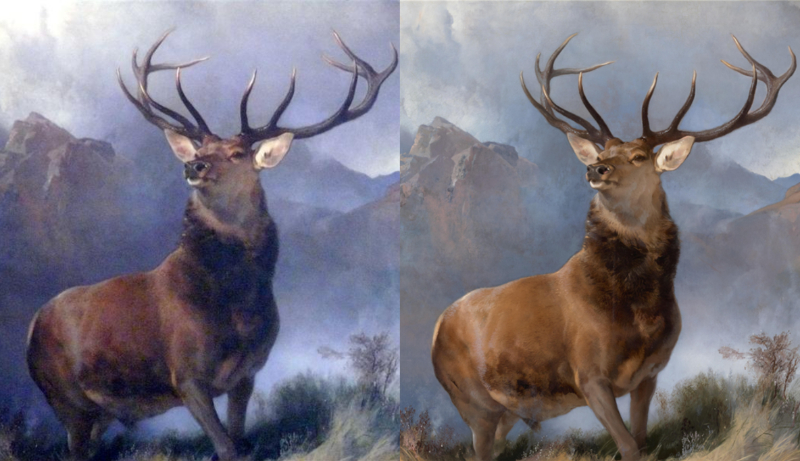The 1851 oil on canvas work The Monarch of the Glen by English artist Sir Edwin Landseer depicts a red deer stag.
It was purchased as one of three panels that were ordered to hang in London’s Palace of Westminster. One of the most well-known works of art throughout the 19th century, it was frequently reproduced in steel engraving and eventually purchased by businesses for use in advertising. By the middle of the 20th century, the painting had almost become a cliché, described by the Sunday Herald as “the ultimate biscuit tin image of Scotland: a bulky stag set against the violet hills and watery skies of an isolated wilderness.”
The Significance of The Monarch of the Glen
The stag has twelve antler points, classifying him as a “royal stag” rather than a “monarch stag,” which requires sixteen points.
The painting was finally acquired after a successful campaign by the National Galleries of Scotland in Edinburgh to purchase it for £4 million was launched in 2017. Now a part of the collection, the artwork is on view in Room 12 of the Scottish National Gallery.
Edwin Henry Landseer’s story
Landseer, a member of the Royal Academy and a favorite of Queen Victoria, was well-known for his depictions of animals in his paintings and drawings. The lion sculptures at the base of Nelson’s Column in Trafalgar Square are among his later creations. Based on stags he had observed on the trips he had been making to the Scottish Highlands from 1824, he began producing a series of painstakingly observed studies of stags in the 1840s. Monarch of the Glen and two other paintings were created for the House of Lords’ Refreshment Rooms in 1850 after Landseer was given a national commission to paint three images related to the hunt.
The paintings were sold to private collectors after they were finished because the House of Commons refused to pay the stipulated £150 commission. The countryside setting, according to some, depicts Glen Affric.
It had three London exhibitions: in 1851, 1874, and 1890. It came from the collection of William Denison, 1st Earl of Londesborough, and was given to Henry Eaton, 1st Baron Cheylesmore in 1884. After his death in 1891, it was purchased by Agnew’s, who then sold it to T. Barratt for £8,000. He resold it in 1916 for £5,250 at Christie’s. With the exception of a rumored price of £10,000 in a private sale of The Otter Hunt in 1873, which would have then marked the highest price ever paid for a British painting, the price in 1892 was the highest made by a Landseer before the 1960s.
The Pears soap firm bought the picture in 1916 and used it in their advertisements. It was then transferred to the distillery of John Dewar & Sons, where it became their brand before being adopted by Glenfiddich. The picture was subsequently purchased as part of Diageo’s acquisition of Dewar’s. Bacardi purchased Dewar’s from Diageo in 1997, but auxiliary assets were not included. After that, Diageo lent the picture to Edinburgh’s National Museum of Scotland.











